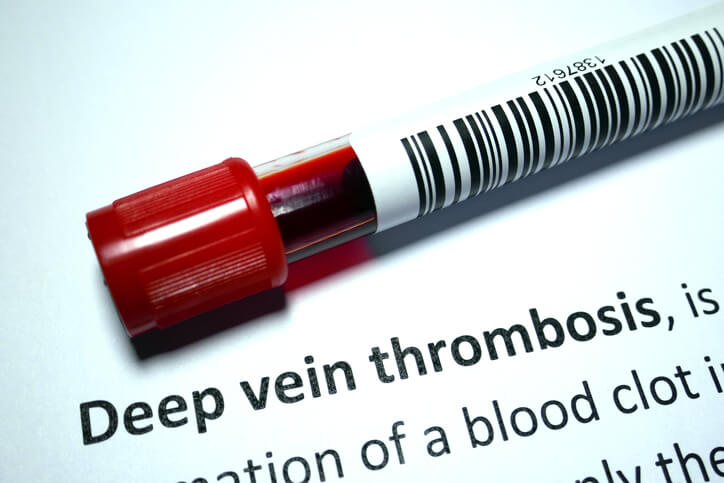Deep vein thrombosis (DVT) patients must prevent blood clots from reaching their lungs. Otherwise, they risk suffering a pulmonary embolism. For most people, blood thinners work just fine for this. But doctors often use inferior vena cava (IVC) filters, too — despite no evidence they actually benefit patients. Below, we’ll list some IVC filter placement risks and how to bring them up with your doctor. If an IVC filter really is your best treatment option, learn how to make your procedure as safe as possible.
When Is IVC Filter Placement A Better Choice Than Blood Thinners?
According to PulmCCM.org, all major medical experts and professional societies accept only two IVC filter placement indications:
- Acute pulmonary embolism (PE) or proximal DVT with inability to provide anticoagulation; or
- Hemodynamically unstable PE patients at risk for another (and potentially fatal) embolism.
But patients with even a slight DVT risk get IVC filters placed every day. And these filters can lead to serious health risks — especially if they’re left in permanently. Unfortunately, this is a common problem. A meta-analysis involving 37 studies found that doctors only remove about 1 in 3 retrievable IVC filters. Patients considering IVC filter placement should ask their doctor about alternative treatment options.
3 Questions to Ask Your Doctor
1. What makes an IVC filter better for controlling my risks/symptoms than blood thinners?
Most people can manage their risks with blood thinners and some lifestyle changes. As we said earlier, there are only two medically acceptable reasons to undergo IVC filter placement. Unfortunately, many doctors still encourage IVC filter placement because they’re more profitable than anticoagulants.
A recent Medpage article discusses results from a Medicare IVC filter placement study with more than 556,000 subjects. Two cardiologists noted that “the vast majority of inferior vena caval filters (91%) are inserted in patients with PE in stable condition, and such patients have not been shown to receive a clinically meaningful benefit.”
Ask your doctor whether an IVC filter’s benefits outweigh the potential risks in your case.
2. Is my IVC filter placement temporary, or will the device stay in permanently?
According to a meta-analysis, doctors only remove 34% of filters after placement. But device manufacturers didn’t design these filters to stay in permanently. They are foreign objects which can fracture, perforate, or migrate to other areas and cause lasting damage.
3. Can I schedule my removal procedure now if it’s a retrievable filter?
Most IVC filters are temporary and should come out within 60 days. If you have a retrievable IVC filter in longer than two months, talk to your doctor. Ideally, your doctor should remove the device between 29 and 54 days after IVC filter placement. Otherwise, the longer it stays in, the harder it is to remove in one piece.
What IVC Filter Placement Candidates Can Expect
Before your procedure, your doctor may perform some blood tests. You’ll also need to disclose all medications you’re taking or allergies. Women should inform doctors if they are pregnant.
The night before your IVC filter placement, eat a light meal. Your doctor will likely tell you not to consume anything but clear liquids after midnight before your procedure.
Plan to remove your clothing, jewelry, glasses and any metal objects beforehand. A friend or loved one should drive you home after your procedure.
Most IVC filter placement patients can resume normal activities within 24 hours. However, be sure to follow up with your doctor about removal. If left in for too long, your risk for serious injuries increases substantially. Complications that may happen when filters stay in too long include:
- Filter migration (in other words, the device comes loose and travels elsewhere inside your body).
- Device fragmentation (the filter’s metal arms, called struts, can snap off and puncture blood vessel walls, internal organs and other nearby tissues).
How to Get Justice and Compensation for Your Injuries
If you experience serious IVC filter complications, you may qualify for a cash settlement. Many patients have now-recalled devices inside their bodies, like the Bard G2 Recovery filter. To see if you may qualify for compensation, fill out your free IVC filter claim review form today. Answer three short questions to check your eligibility. You’ll see your evaluation results online immediately. Once you’ve submitted your information, an experienced lawyer will call you to discuss your case.
Related: “Is an Inferior Vena Cava Filter the Same Thing as a Stent?”
Mandy Voisin
Mandy Voisin is a freelance writer, blogger, and author of Girls of the Ocean and Star of Deliverance. As an accomplished content marketing consultant, mom of four and doctor's wife, Mandy has written hundreds of articles about dangerous drugs and medical devices, medical issues that impact disabled Americans, veterans' healthcare and workers' compensation issues since 2016.

